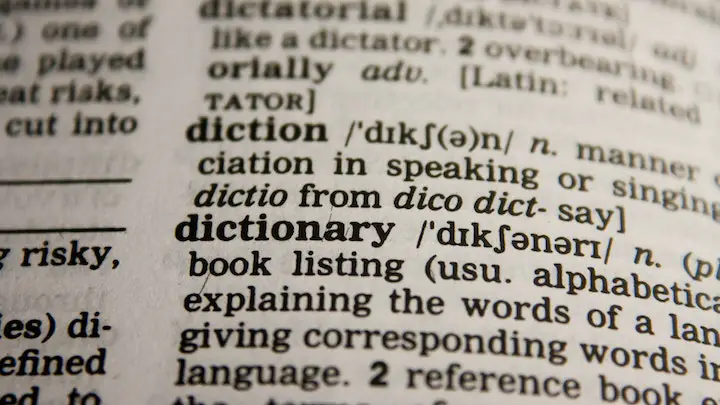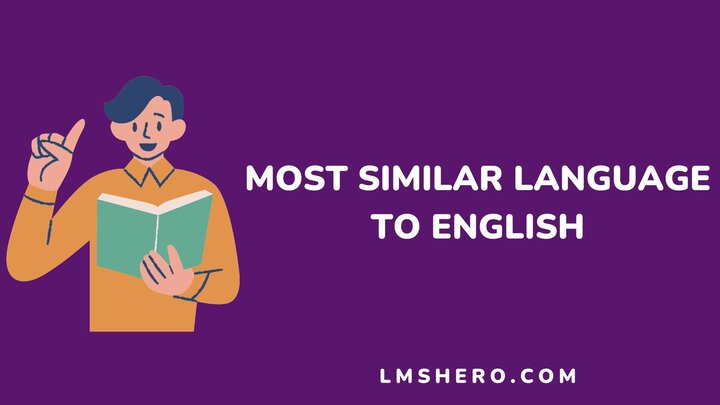English is a language open to continuous change. This means languages that are most similar to it will share the same characteristic.
A major advantage of learning languages similar to English is that you can learn them faster if you already understand English.
This is because changes that occur in the English language may or may not affect these languages. The fickle nature of English can also make it difficult to identify which language(s) is closely similar to it.
I won’t be surprised if your guess is in line with some of the languages I have found to share similar to English. Nevertheless, there are extra details in this guide you will be happy to learn.
Which Language is Most Similar to English?

No other language is close to English than Scots. This language is “arguably” the closest language to English because it is generally viewed as a dialect of English and not a distinct language.
Scots originated from Anglo-Saxon (Old English); the same background responsible for English. It was the major language in Scotland until its reign declined due to the union of the Scottish and English parliament in 1707.
English became the language of the government and religion and eventually eased out Scots in common speech. Nevertheless, people still speak Scots, especially in Scotland because it forms a vital part of Scottish identity.
Other Languages That Are Similar to English
1. Frisian
If anyone would be overlooking Scots because it shares a very identical background with English, the next language they would consider is Frisian.
Frisian is a West Germanic language that shares 80% grammatical similarities with English. It is also a blend of three languages spoken in some parts of Germany, the Netherlands, and Denmark.
Fast facts about Frisian languages
- The language shares a common ground with the Saxons, Angles, and Jutes who were residents of England.
- Frisian was a popular language in the Middle Ages.
- It was spoken across the southern coast of the North Sea coursing through Belgium down to the river Weser in Germany.
- The Frisian language was used in writing until 1500 when Dutch became the primary language in most Frisian communities.
- Frisian poets revived the language in the 19th century with a series of publications.
- Currently, there are about 480,000 Frisian native speakers in the world.
2. Dutch
While discussing the Frisian language and its similarities with English, I revealed how the Dutch replaced it. So, it makes sense that Dutch is second to Frisian.
Like Frisian and English, Dutch is a product of the West Germanic or Proto-Germanic language. Consequently, it shares more than 75% of its lexical qualities with English.
Take a look at this:
Dutch Phrase – “Ik heb een probleem.”
English Meaning – “I have a problem,”
Notice the similarity? That is how easy it is to notice how Dutch’s grammatical structure mimics that of an English speaker.
This is a major reason why Dutch natives find it easier to learn English compared to other difficult languages like Mandarin and German. They are arguably the most fluent non-native speakers in the world.
Afrikaans, a South African dialect and derivative of Dutch also shares similarities with English but features more indigenous vocabulary.
Fast facts about Dutch
- Currently, there are about 23 million Dutch speakers worldwide.
- The language is spoken majorly in Belgium, Netherlands, France, some Caribbean regions, and Suriname.
- The longest word in Dutch has 38 letters and has a 3-word translation in English.
- The word is “meervoudigepersoonlijkheidsstoornissen” and it means “multiple personality disorders”.
3. German
German is another language that shares the same Proto-Germanic background as English. While it is considered one of the most difficult languages to learn, an English speaker should have no difficulty learning it.
This is because it shares about 60% of grammatical structure with English. Pronunciation overlaps are also common in German.
Fast facts about German
- After English, German is the most commonly spoken language in the world.
- It has about 95 million speakers.
- When learning German, pronunciation usually requires emphasis that can make you sound angry.
- The Gutenberg Bible is the first book to be printed and it was done in German.
4. Norwegian
Not every language that is similar to English comes from a West Germanic background. Norwegian belongs to this category but is still related to Germany (the Northern part).
The Northern Germanic language shares most of its grammatical structure with English thanks to Viking invasions in the 8th down to the 11th centuries.
These Vikings communicated in the Old Norse and somehow, a reasonable amount of this language features in modern English to date.
Fast facts about Norwegian
- Norwegian has 2 official forms: The Bokmal and the Nynorsk.
- There are numerous dialects in the language.
- There are about 5 million native speakers of this language in the world.
- The language is “pitch accent” based.
- It features fewer tones when differentiating identical words.
5. French
French is another popular language that shares about 27% of its lexical structure with English. With this percentage, it can only be the 5th closest language to English.
French belongs to the Romance Language family. While there are distinct differences between both languages, Norman Invasion laid the foundation for a few similarities.
In 1066, a large portion of modern-day England was conquered by the Duke of Normandy. The Duke reviewed the language of the elite and converted it to Old French. He is the major reason why English and French share more than 1,500 cognates to date.
What Are The Fastest Ways to Learn Any Language?
Truth be told, all languages have their fun and challenging aspects. Why you wish to learn a language and knowing the suitable study method(s) to apply can make the journey easy.
For English speakers interested in learning a second language, you already have a list of languages that share a similar background with English.
Here are the fastest ways to meet your learning needs:
1. Set language-learning goals
If you wish to learn a new language, having a primary goal in mind will help you design a definite plan to achieve your goal.
A motive behind your learning will help you constantly access your improvement and decide if you are learning at the right pace.
The best practice suggests writing your goals down, breaking them down into chunks (short-term goals), and constantly challenging yourself to be better than you used to be.
2. Focus on the “right” words
Focusing on the “right” words here means starting with words that are very common or likely to come up in sentence constructions or dialogues.
For example, in English, the top 100 words make up about 50% of English texts.
Regardless of which language you are interested in learning when you start with these words, your journey will be faster. No time wasting.
3. Study smart
Studying smart is related to how you choose to learn a language. The use of flashcards is regarded as one of the smartest ways you can learn a foreign language.
It will help you focus on individual words and help you memorize new information. I recommend using electronic flashcards because they can be stored on your smartphones and accessible whenever you need them.
You can also study via language apps, attend physical classes, have a private tutor, or subscribe to YouTube channels. While learning, try and listen to radio programs more, and do not be shy to engage in real-time practice with friends.
FAQs
Is Dutch similar to English?
Dutch is similar to English.
Like English, it is another West Germanic language and features a similar lexical structure.
Which language has the most cognates with English?
Norwegian has the highest number of similar cognates to English.
This is thanks to its Germanic background as well.
Which languages have enriched English vocabulary the most?
Languages that have influenced English’s vocabulary the most are Old Norse, Persian, French, Spanish, Italian, Chinese, Russian, and Japanese.
Is Swedish similar to English?
Swedish is also similar to English.
It is a Northern Germanic language.
Conclusion
Now that you are familiar with the most similar languages to English, which would you like to start with? With applications like Duolingo and Babbel, you can start your journey with just baby steps.
I hope you found this guide helpful. Perhaps you would like to know more about Duolingo, please see if Duolingo Plus is worth it.
Thanks for reading.







